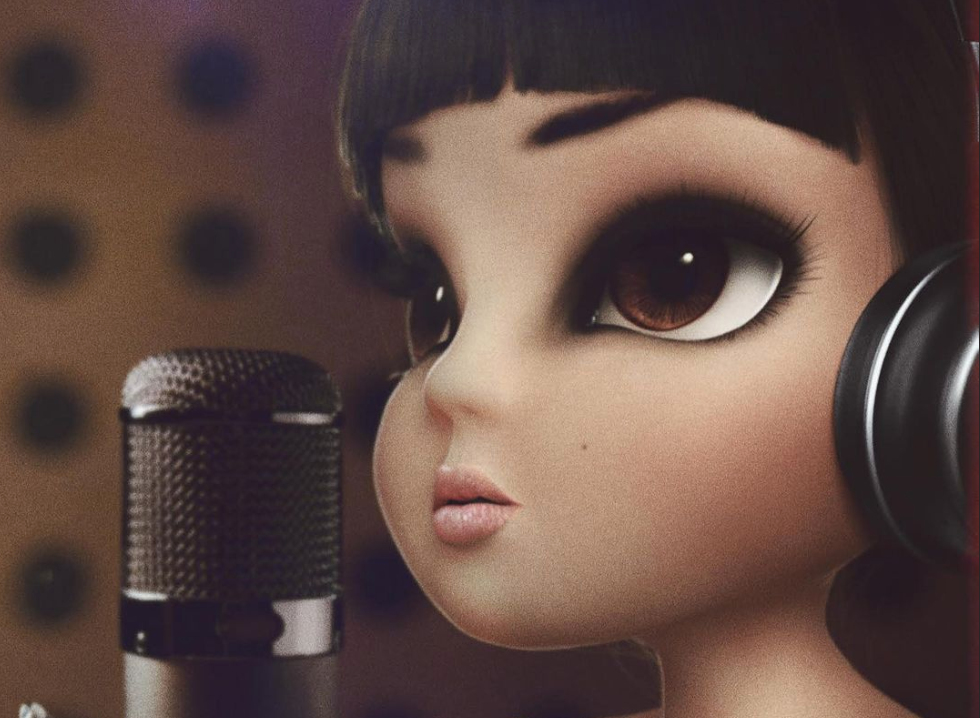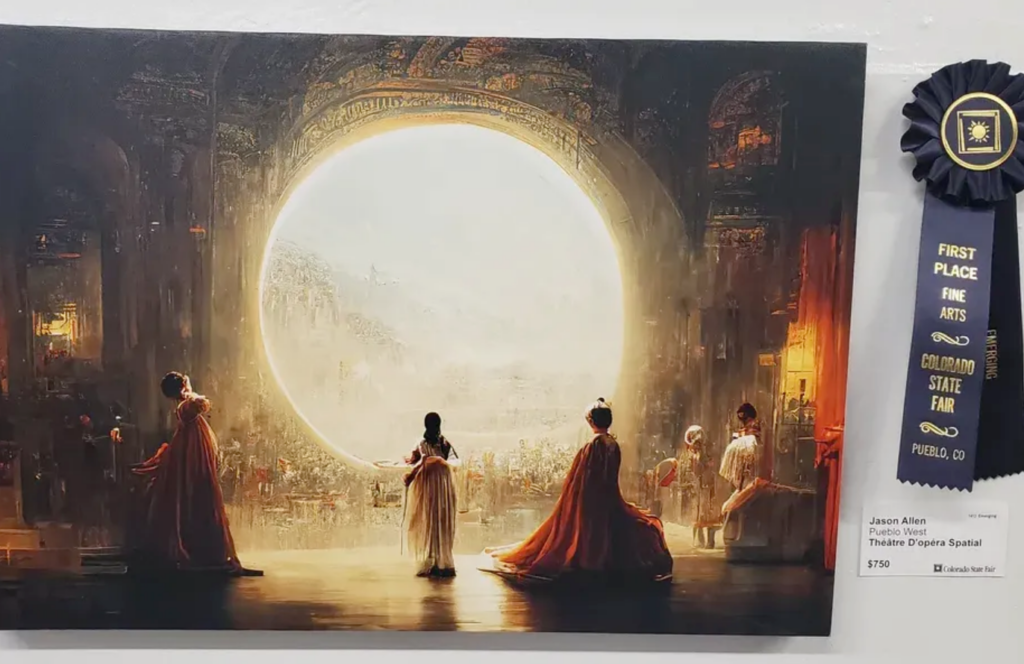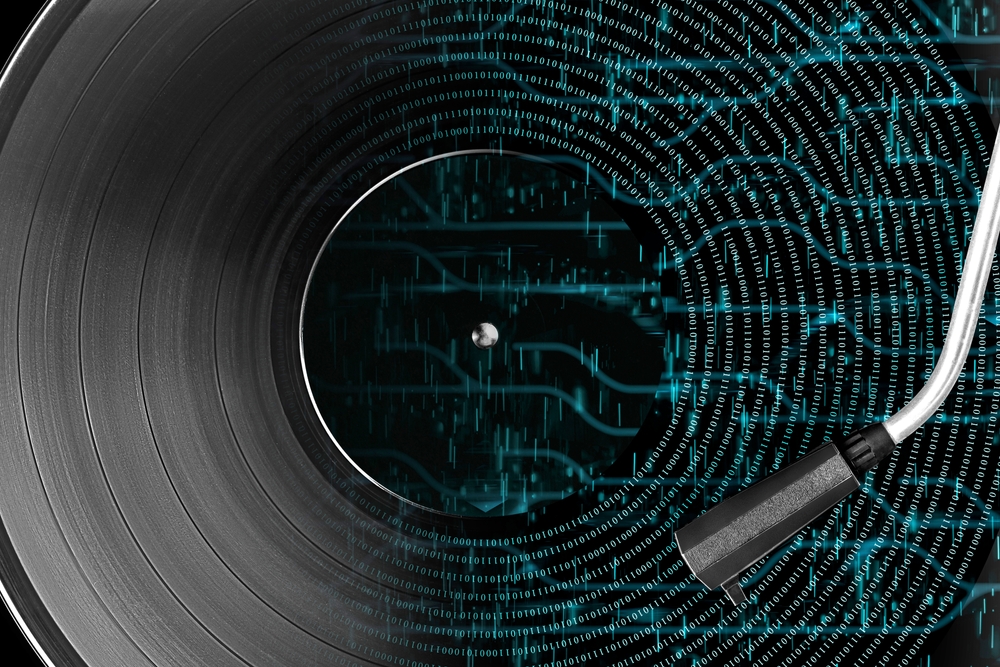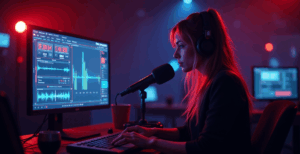In a world where the lines between reality and virtual are blurring, AI-generated pop stars are making their mark on the music industry.
Among the protagonists is Noonoouri, a digital pop sensation created by German designer Joerg Zuber.
Described as a “blue-haired, doll-faced virtual influencer,” she recently landed a record deal with Warner Music and has hundreds of thousands of social media followers.
Notably, Noonoouri’s vocals were crafted, in part, through AI tools, earning her the title of an “AI popstar.”
Mr. Zuber, discussing Noonoouri’s creation, shared, “We started with the hair, the drawings of the fabric, the movement and everything, and I slipped into a motion capture suit to walk as her… to define her movements, her gestures and everything.”
He further highlighted that they wanted Noonoouri to have a more “techie” voice than a human one. Algorithms assisted in refining her vocals, matching the desired speed, tempo, and pitch.
This merger of technology and music has unsurprisingly stirred debate in the music industry, with debates intensifying over whether AI might infringe upon or even replicate the distinct sound, style, or image of human artists.

Noonoouri has remarkably ‘modeled’ for Balenciaga and other fashion brands, giving new meaning to ‘AI model.’
Of course, there are minimal overheads related to a popstar primarily consisting of a series of data files. No tour dates, no studio recording fees, no roadies, and no rock n’ roll lifestyle to manage.
Despite admitting that ‘some AI tools’ are used in Noonoouri’s music, her creators recently published videos to describe how she’s “not AI, but CGI” and describe the painstaking work that goes into creating her and her music.
There is a tangential debate about how terms like “AI” should be wielded in these discussions. Algorithmic processing doesn’t necessarily constitute AI, and machine learning-integrated tools are ubiquitous in music production.
Nevertheless, the digital essence of ‘musicians’ like Nonooouri raises questions that intersect with debates surrounding AI’s risks and impacts.
As Marec Lerche, head of business development at Warner Music Central Europe, describes, “You can appear in different places at the same time, you can change her style in a minute – we can make Nonooouri fly if we want, because it feels natural to her.”
Lerche goes on to inadvertently punctuate the risk AI avatars pose to humans: “She [Nonooouri] is already a digital character so there are more opportunities than with a human artist in that respect.”
Noonoouri has already become far more successful than most artists dream of, but does this creation constitute authentic artistic talent?
While it’s tough to knock Joerg Zuber’s ingenuity, Noonoouri distorts the boundaries of where technology and art combine and diverge.
AI-generated music and art have already started imprinting their own ‘signature’ on creativity. While not welcomed by everyone, it might be seen as an inevitable byproduct of human progress.
In the visual arts, AI-generated images have already won prizes, and some pieces look aesthetically stunning, whether you know they’re generated with AI or not.

Maybe AI is the latest entry in a sequence of tech-inspired artistic signatures.
As electronic music pioneer Brian Eno spoke of digital transitions in the music industry in 1996, “Whatever you now find weird, ugly, uncomfortable and nasty about a new medium will surely become its signature. CD distortion, the jitteriness of digital video, the crap sound of 8-bit – all of these will be cherished and emulated as soon as they can be avoided.”
It’s too early to tell how deeply record labels and consumers will invest in AI-created music, but considering some of these creations have millions of views and subscribers, they’re already hoovering up attention from human artists.
With that said, it’s critical not to overlook that humans lie behind these digital facades. And while the whole setup might seem formulaic to some, is that not what partly defines pop music anyway?
Supporters of AI-generated musical avatars say it’s a democratizing force for the industry, enabling producers to experiment with different formats without the human manipulation involved in the traditional record-signing process.
For example, Korean pop music (K-pop) has a history of subjecting young musicians to sexual and emotional abuse in pursuit of the perfect genre formula.
However, using AI to supplant foul acts risks new forms of normalization. The sexualization of childlike AI avatars has already emerged as a disturbing application of the technology.
Virtual influencers have been around for a while
Non-AI virtual influencers in music aren’t an entirely new phenomenon.
Lil Miquela, another digital character, began releasing tracks in 2017 and rapidly gained millions of views on YouTube. Lil Miquela is created using CGI, but there’s little clarification over how the vocals and melodic accompaniments are composed.
Miquela attracted controversy when she kissed model Bella Hadid in a Calvin Klein advert, leading her creators to be criticized for producing sexualized clickbait.
Also, Miquela’s creators began labeling her as a ‘social activist,’ which is often viewed at odds with her role as a marketing instrument.
Long before Lil Miquela, Gorillaz became famous for their digital avatars in the early 2000s, appearing on TV music programs as an animated ‘virtual band.’
Blur vocalist and Gorillaz brainchild Damon Albarn said of AI, “It’s absurd. Anyone who has so much time to sing songs through a Michael Buble filter and put them on the internet is a ****** idiot. If the AIs are the future of music, we’re gonna need better drugs to get us through it.”
Decoding the boundaries between these human-created digital entities requires a large dollop of interpretation. While some argue that, so long the work itself is original, it’s all fair game, others are concerned that avatars like Noonoouri are one step away from entirely relinquishing music from human faculties.
As one commenter on Noonoouri’s “Not AI but CGI” YouTube video described, “The “humans are involved” portion (an attempt to appease haters) will go away real quick immediately once they figure out how.”
AI music and image technology is growing more sophisticated
AIs are embedding themselves into the trades and professions where human creativity is fundamental, such as art, entertainment, and music.
The Hollywood writers and actors strike was an early skirmish, drawing the battle lines between industry giants like Netflix seeking to leverage AI’s scalability and the humans below scrapping to keep their jobs.
Dr. Shara Rambarran, a notable musicologist, weighed in on the argument that AI steals human work, saying that the entry of virtual influencers as pop stars may pose a challenge to real-life musicians “who want to put their music out there and not have to have that [additional] competition.”
Artists like Sting, Albarn, and Ed Sheeran have expressed reservations about the technology’s relationship to music, among many others.
In a stand against AI-generated music, the organization behind the Grammy’s declined an AI-generated collaboration between Drake and The Weeknd, created without either party’s permission by the artist Ghostwriter. Spotify also moved to ban AI-generated songs that replicate other artists without their permission.
The now-prolific Ghostwriter has been attempting numerous methods of monetizing his work. Ghostwriter’s music occupies a highly contentious arena in the policies of platforms of YouTube, Spotify, iTunes, etc.
Another prominent AI music project, “There, I Ruined It,” set out “with the simple goal of ruining as many beloved songs as possible before it’s banned from the Internet” – top points for honesty.
The product of Texas musician Dustin Ballard, “There, I Ruined It” mashups have received recognition from Snoop Dogg, Jack Black, Charlie Puth, Paul Reubens, Lin-Manuel Miranda, Michael Bublé, Scott Bradlee, “Weird Al” Yankovic, Questlove, and Ed Sheeran.
Despite copyright complaints, many of Ballard’s videos remain online, but some, like his notorious production of Johnny Cash singing “Barbie Girl,” have been removed. Other accounts have reposted them.
Is human creativity being challenged or magnified?
The evolution of AI in the world of music underscores the broader shifts we’re witnessing in the nexus of technology and human creativity.
As the digital realm intersects with our tangible world, the distinctions between ‘real’ and ‘virtual’ are growing more ambiguous.
While the music industry grapples with virtual influencers, other sectors face similar conundrums.
Visual arts are confronting the realm of AI-generated paintings, TV, film, and theater actors face replacement by digital copies, games designers are facing AI-integrated design platforms, and writers and authors are confronting increasingly sophisticated large language models (LLMs).
Historically, technological advancements have often sparked concerns about the dilution or erosion of artistry. The advent of photography raised questions about the future of painting; film and television revolutionized storytelling, displacing traditional narrative forms.
Thus far, rather than totally eliminating predecessors, technology has expanded the canvas, and there will always be traditionalists keeping old formats alive. Just look at the resurgence of vinyl, tape cassettes, and VHS.
In the end, the true challenge lies not in the technology itself but in defining the ethical boundaries of its use.
As a society, we must decide how we value authenticity, what rights artists have over their digital representations, and how we integrate these new forms of artistry into our cultural fabric.
As John Lasseter of animation giant Pixar observed, “The art challenges the technology, and the technology inspires the art.”
“The art challenges the technology, and the technology inspires the art.” – John Lasseter
— Pixar (@Pixar) July 18, 2011
Whether you support or reject the premise that AI is a force multiplier for creativity rather than a replacement, it will be hard to resist its influence.





